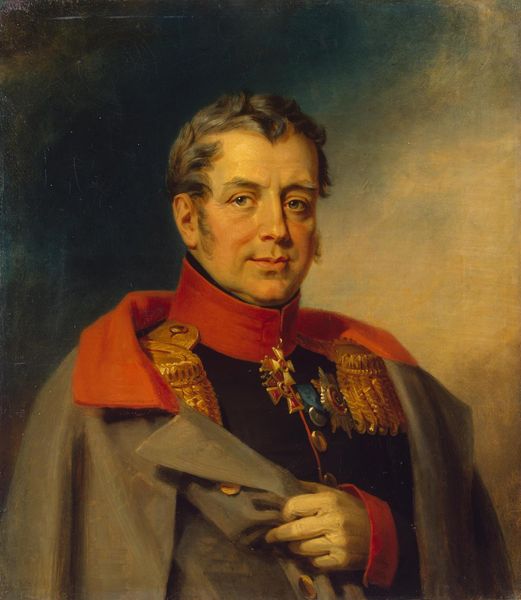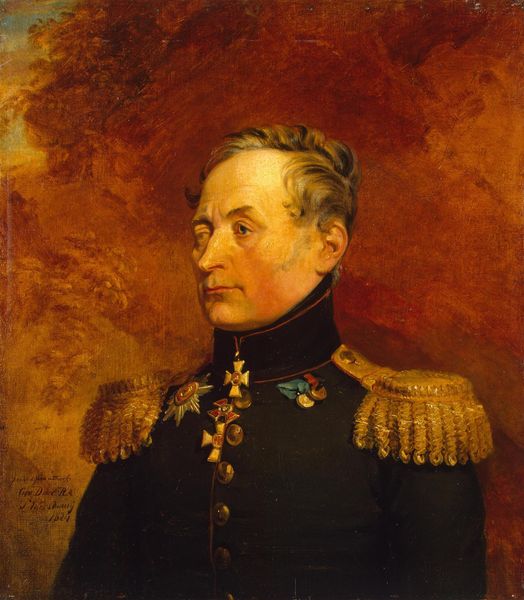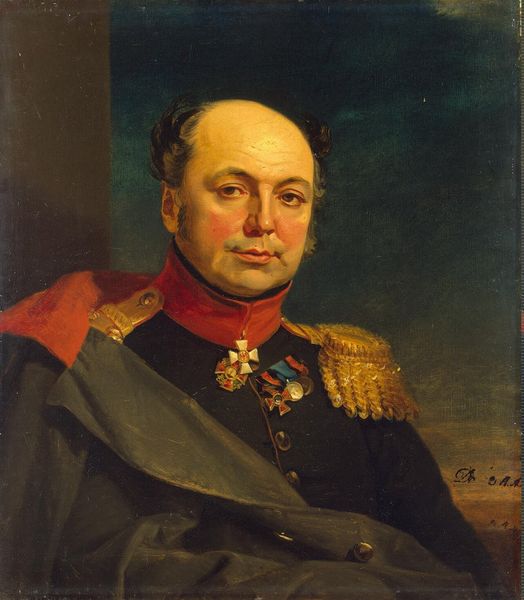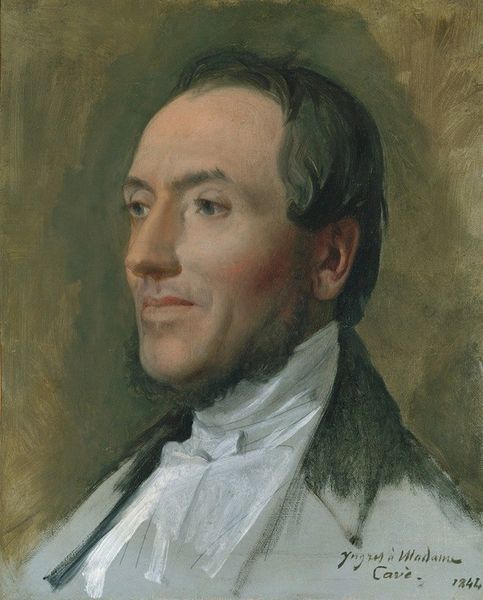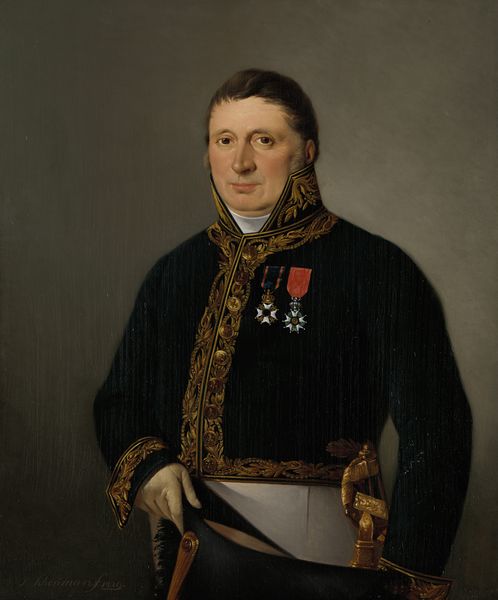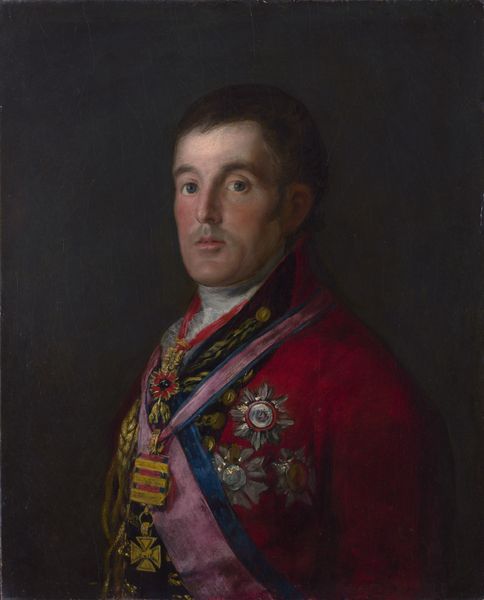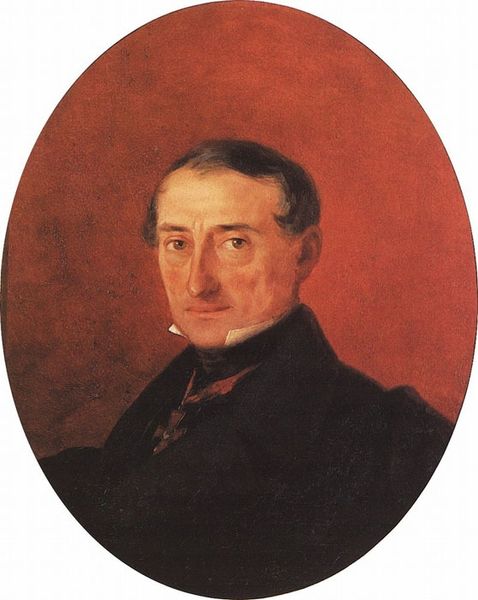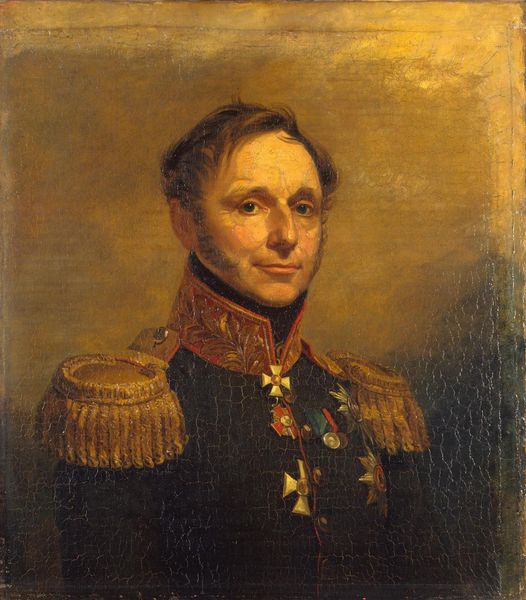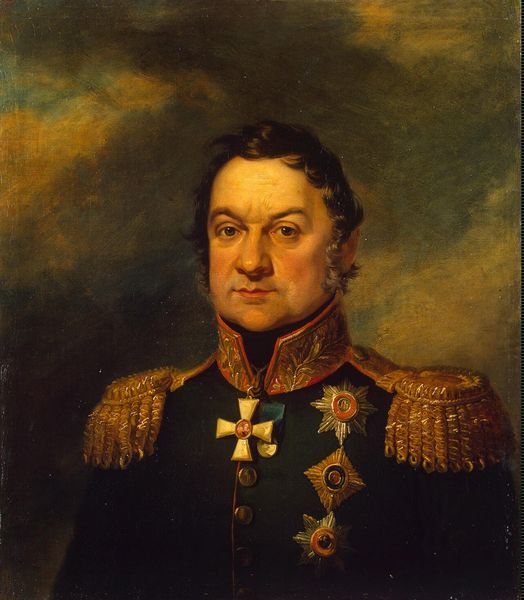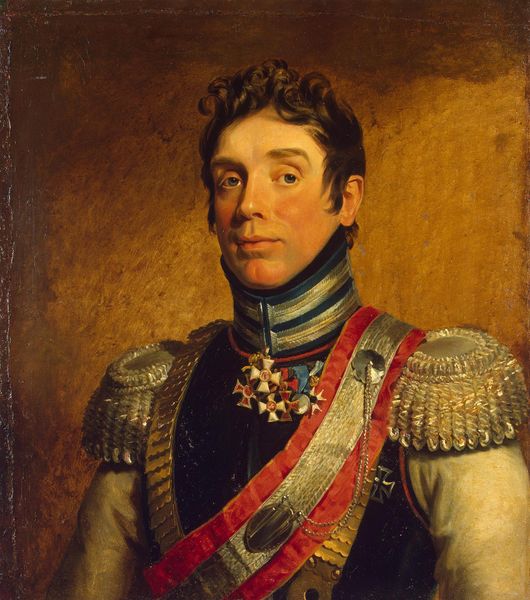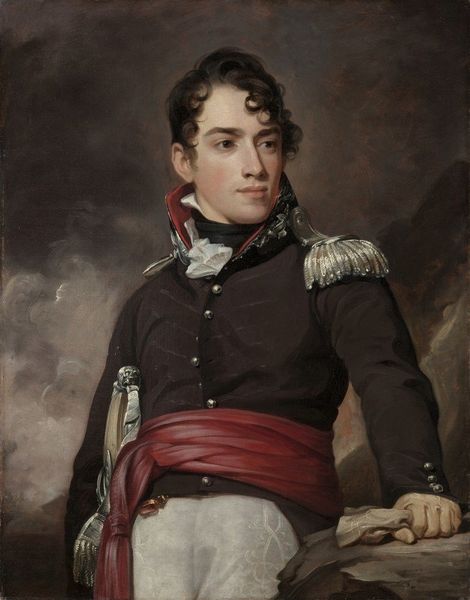
painting
#
portrait
#
portrait
#
painting
#
romanticism
#
history-painting
Copyright: Public domain
Curator: Welcome. We’re standing before George Dawe’s “Portrait of Otto I. Buchholtz,” which can be found here at the Hermitage. Editor: My first thought is how contained the figure feels. The palette is rich yet somehow muted, as if suppressing a vibrancy just beneath the surface. The brushstrokes are blended smoothly giving the portrait a restrained polish. Curator: Dawe’s work frequently involved portraiture of military figures, many connected to the Napoleonic Wars. Buchholtz was a lieutenant general, his stern yet faintly melancholic expression speaks of someone carrying burdens of responsibility and perhaps memories of the battlefield. Editor: Interesting that you pinpoint melancholy; I see more an exercise in controlled tension. The upward gaze meets with an almost unsettling forward projection; the eyes convey almost theatrical self-possession. I am captivated by the materiality and detail in the gold of the right shoulder guard, and how that small surface provides a rich contrast to the flowing fabric around him. Curator: Indeed, that controlled tension perhaps reveals something about the social expectations placed upon such figures. He isn't merely an individual, he is a representation of power, of duty, for viewers. The portrait conforms to types we have come to see throughout centuries of portraiture – but he seems to hold something of himself back. It is not bravado, or overt charisma, we are seeing, but something subtly introspective and perhaps resigned. That look could tell the stories of entire historical traumas and the changing tides of national identities after those traumas. Editor: You’re pulling us beyond just the representation into a grand theater of societal structures and the heavy burden of responsibility! From the fabric's swirl, I discern movement—not chaotic or violent, but perhaps of contemplation or subdued internal resolve. Curator: It's precisely that blend, isn't it? Dawe presents an individual but reminds us, through subtle cues in expression and attire, that even a lieutenant general is bound by—and representative of—historical and social forces beyond himself. A portrait and an effigy all in one. Editor: I agree; it's this duality – between representation and the raw qualities of a life – that captures me about Dawe’s composition.
Comments
No comments
Be the first to comment and join the conversation on the ultimate creative platform.

